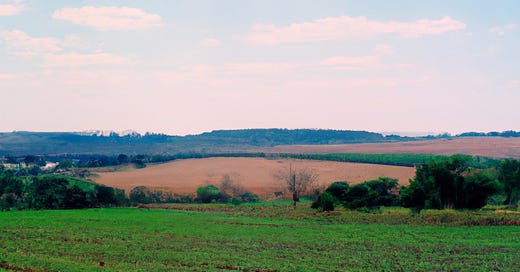Heat vs. Harvest: Brazilian Soybean Yields at Risk
Read How Soybean Farmers are Responding to a 6% Reduction in Yields for every 1°C Increase in Temperature
Brazil's significant role as a global commodity supplier stems, in part, from agricultural expansion in the Cerrado biome since the 1970s. However, the scarcity of favorable soil and climate conditions has forced farmers to venture into marginal lands with unreliable rainfall for rain-fed crops. This article delves into the economic implications of occupying drier areas in the Cerrado biome, which are projected to become even more arid in the future. Through extensive panel data regression analysis performed by researchers by the International Journal of Agricultural Sustainability, we examine the effects of temperature and precipitation on soybean yields.
Research Article: ‘Temperature effect on Brazilian soybean yields, and farmers’ responses’ by Daniel S. Silva
Temperature Impact on Soybean Yields
The analysis reveals a concerning trend: for every 1°C increase in temperature, soybean yields experience a substantial reduction of 6%. This finding underscores the vulnerability of soybean production in the face of rising temperatures. As extreme heat events become more frequent, farmers encounter significant challenges in adapting agricultural technologies to mitigate the effects. The inability to adapt effectively to extreme heat heightens reliance on capital availability for investments in irrigation, raising uncertainties about the future sustainability of this capital-intensive agricultural system.
Droughts, Land Concentration, and Indebtedness
Droughts in recent years have led to adverse consequences for farmers in the Cerrado biome. These include land concentration and increased indebtedness, as farmers struggle to cope with the impacts of water scarcity. Historical observations indicate that current agricultural technologies are ill-equipped to handle extreme heat, further exacerbating the dependence on irrigation investment. This poses questions regarding the long-term viability of such an agricultural system if breakthroughs in adaptation strategies are not achieved.
Brazilian Farmers’ Response and Associated Risks
To mitigate the negative impacts of water scarcity, farmers in the Cerrado have increasingly turned to irrigation. However, studies suggest that this intensification of irrigation, relying on both surface and groundwater, is depleting water resources beyond sustainable levels. This raises concerns about the long-term sustainability of this farming strategy and necessitates a comprehensive reassessment of water management practices.
Farmers in the Cerrado acknowledge the increasing temperatures in the region and the association of droughts with El Niño events. However, many perceive temperature and rainfall fluctuations as cyclical patterns rather than permanent or long-term trends. While some attribute these changes to global warming, skepticism persists regarding their anthropogenic origin and their impact on regional vegetation loss, evapotranspiration, and rainfall.
Amidst unusual weather patterns, farmers in the Cerrado employ various adaptive measures. These include adjusting calendars to delay or anticipate soy harvest, implementing minimum or no-tillage techniques, practicing crop-pasture integration, rotating crops, and transitioning to more resilient crop varieties adapted to harsh conditions. These strategies aim to mitigate the impacts of changing weather patterns on agricultural productivity.




